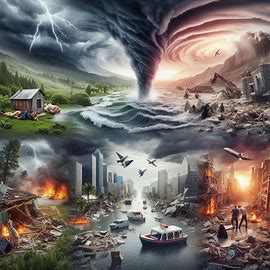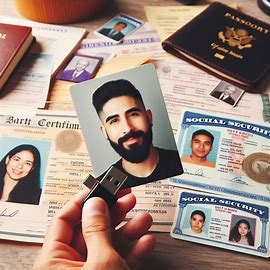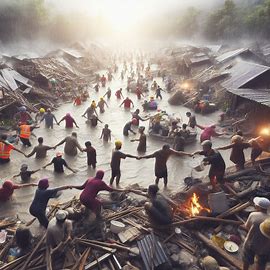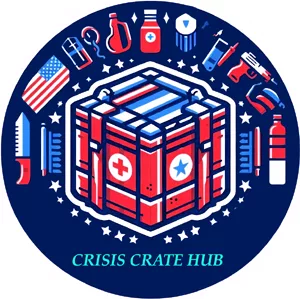Table of Contents

Emergencies are like uninvited guests – you never know when they’ll show up. From natural disasters like hurricanes and earthquakes to unexpected health crises , for example, the Covid -19 outbreak, or even man-made events, such as a sudden declaration of war. Life can throw some real curveballs. Having a solid emergency plan is not just a nice-to-have; it’s a must-have in today’s often unpredictable world.
Interestingly, many people know they should have a plan but don’t take action. Did you know that statistics often show a huge gap between families who are aware of emergency planning and those who actually follow through? It’s like knowing you need to eat healthy but reaching for the chips anyway! But if you can close that gap, the sense of peace it offers can be immense.
Picture this: a sudden storm hits and power’s out everywhere. Families with a plan can quickly get their bearings – they know who to call, where to go, and what to do next. It’s not just about being prepared; having a plan takes away a lot of the uncertainty and fear that can paralyze you in a crisis.
Take a moment to think about stories you might’ve heard of families who were caught off-guard during an emergency. Those stories often highlight just how vital planning ahead can be. Having your ‘just in case’ plan means being one step ahead – and that step could make all the difference in staying alive.
Crafting a Comprehensive Family Emergency Plan: Key Components
Creating a family emergency plan means piecing together a few critical areas that’ll help you steer through any storm. A good starting point is figuring out what risks lurk around your neck of the woods. Different places come with their own set of challenges – be it hurricanes on the coast or earthquakes along those famous fault lines.


In today’s digital age, tech can be your best buddy. There are apps for everything, including helping you prep and stay informed. Having digital backups of important documents and knowing how to access emergency alerts can save you a lot of hassle later.
Next up, building your plan. Think of it like crafting a personalized survival guide. You’ll want an evacuation route, a communication strategy, and a stockpile of essential supplies. This includes everything from medications to non-perishable foods such as MRE’s, (Meals Ready to Eat). And remember, no size fits all here. Consider your family’s unique needs – whether that means factoring in little ones, medications, making allowances for grandma, or remembering to plan for the family pets.
Once you’ve got the basics set, get the whole gang involved. Tailor your plan to fit everyone’s needs and make sure each family member knows their role. Prepare now so you’ll be ready if and when something unexpected happens.
Effective Communication: Ensuring Every Family Member Knows the Plan

Meetings and drills aren’t just for teams – your family is your team, right? Regularly scheduled family meetings can help everyone understand their roles. Practice these plans now and again, so nobody forgets. It’s like rehearsing a play, where everyone needs to know their lines in case of a debut performance.
Once you’ve crafted your family emergency plan, communication steps up as the MVP or “Most Valuable Player”. It’s all about making sure every family member is not just aware but ready to act when needed. Start with a solid contact list. This should include essential numbers like local emergency services, doctors, and a few out-of-town contacts. Knowing who to reach out to is vital for keeping everyone in the loop.
Kids have wild imaginations, and that can be super helpful when explaining emergencies. Use simple language and stories they can relate to, maybe even letting them assume their role as their favorite super-hero, making the process a lot less scary for them and more engaging. Turn learning into a game or use role-playing to make the information stick.
Plans aren’t one-and-done deals. Life changes, and so should your plan. Keep it updated every so often, especially when big life events happen. It’s smart to periodically review everything to make sure your info is fresh and everyone remembers what to do.
Building a Culture of Preparedness: Long-term Benefits and Community Involvement

Turning preparedness into a lifestyle is an absolute game-changer. It’s not about living in constant fear but rather integrating readiness into everyday life. When it’s as routine as making a grocery list, you’re naturally more alert and resilient.
The benefits are real. Being prepared can not only save lives when the unexpected happens, but it also dramatically reduces panic and confusion. Knowing you’ve got your ducks in a row offers a surprising amount of freedom and a sense of relief.
While it’s awesome to have your family equipped, why stop there? Engaging with your community’s resources can enhance readiness across the board. Local authorities and emergency services often offer tons of valuable information, training, and sometimes even drills.
Sharing your knowledge with friends, relatives, or neighbors can amplify the impact. Encouraging others to craft and refine their own plans makes the whole community stronger. In emergencies, having a network of prepared families can provide crucial support and assistance.
By building these habits now, you and your community will be better positioned to handle whatever comes your way. Advocate for preparedness, and make your voice heard – you’re not just preparing for yourself but helping lift the entire community by not competing for crucial resources at a time when your entire community may be experiencing anxiety and duress. Have a well thought out plan, acquire the necessary supplies, and share the knowledge with you and yours!
